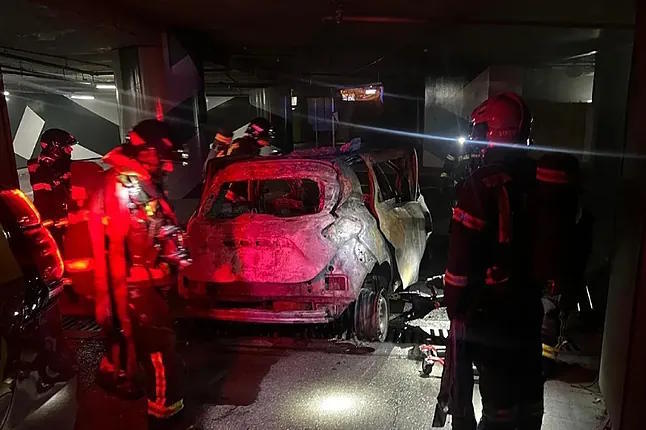Why can an electric vehicle catch fire?
The most common cause is what happened in that garage: an accident that damages the batteries, breaking or puncturing them, causing a chemical reaction (when lithium reacts with oxygen) that starts the fire. Much less likely is for it to occur spontaneously due to a defect. Another possibility is if the vehicle is charged in a faulty electrical installation, overheats, and causes a fire that then spreads to the rest of the car, also affecting the batteries, which should be avoided at all costs.
Are these fires more common than in combustion cars?
Several studies indicate otherwise. They experience fewer incidents of this type. For example, a report by the Swedish Civil Contingencies Agency (MSB) covering the years 2018 to 2023 reveals that battery technology improvements have made electric cars safer and less prone to catching fire than combustion models. In this regard, research disseminated by the Aedive association, based on data from nearly 800,000 vehicles, shows that the probability of a fire in a modern car is only 3.2 cases per 10,000 vehicles, a figure that drops to 2.9 in the case of electric cars. Finally, the OCU indicates - based on studies conducted in Nordic countries, Australia, and the USA - that "a diesel or gasoline combustion engine car has a 10 times higher risk of catching fire than a battery-powered one."
They have higher intensity and fire peaks, especially when the fire reaches the battery and the cells can explode one after another. That's why it's crucial to inject water or another extinguishing agent directly into them. Otherwise, thousands of liters will be wasted: up to 200,000 were used last September in the fire of a Tesla Semi Truck. And the road had to be closed for 14 hours to ensure that the battery had completely cooled down. According to the Spanish Association of Fire Protection Societies, when a lithium-ion battery (the most common type) catches fire, temperatures can exceed 1,000 °C, emitting toxic gases (especially hydrogen fluoride) that require firefighters to attack them with full gear and self-contained breathing apparatus. Additionally, they can reignite even after being extinguished, as heat can damage adjacent cells in the battery. That's why they are particularly serious in enclosed spaces like garages.
Can a car be safely charged at home or in the garage?
As long as the proper equipment is used and the manufacturer's recommendations are followed. In fact, thousands of Spaniards have already installed them in communal garages and received assistance for it. Furthermore, regulations require that new developments with more than 20 dwellings be prepared so that all parking spaces can have a charging point. However, it is important that professionals carry out the installation, and it is not advisable to overload the outlets: connecting an electric vehicle to a household outlet, like the one for a washing machine, is allowed but can generate considerable heat if used for long periods and at high power levels.
Do insurance companies penalize these cars?
No. In fact, some companies offer lower premiums for them. Among other reasons, because their drivers take fewer risks and drive more cautiously to avoid draining the battery.
